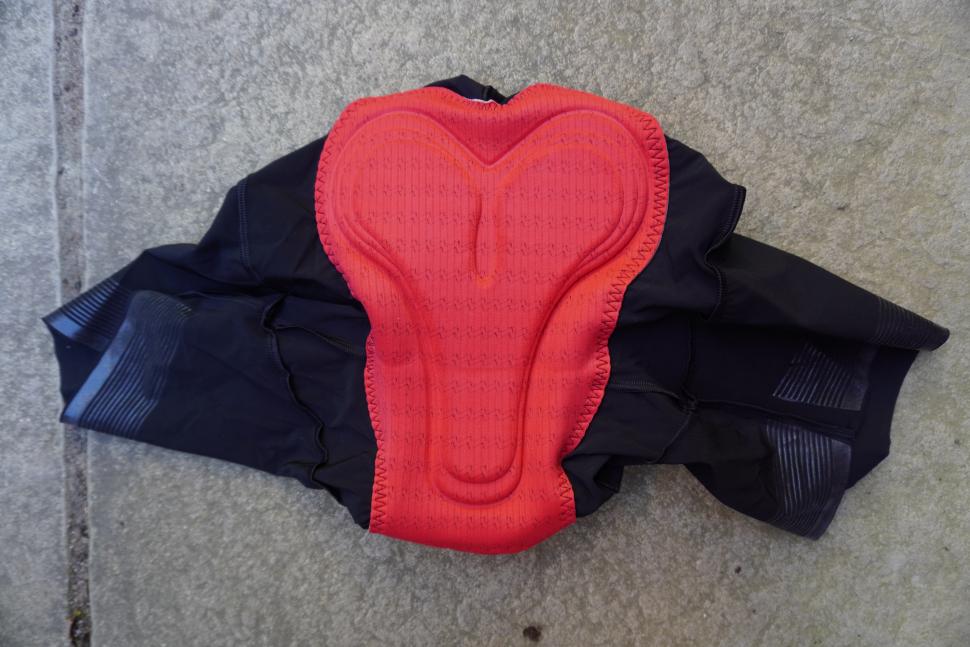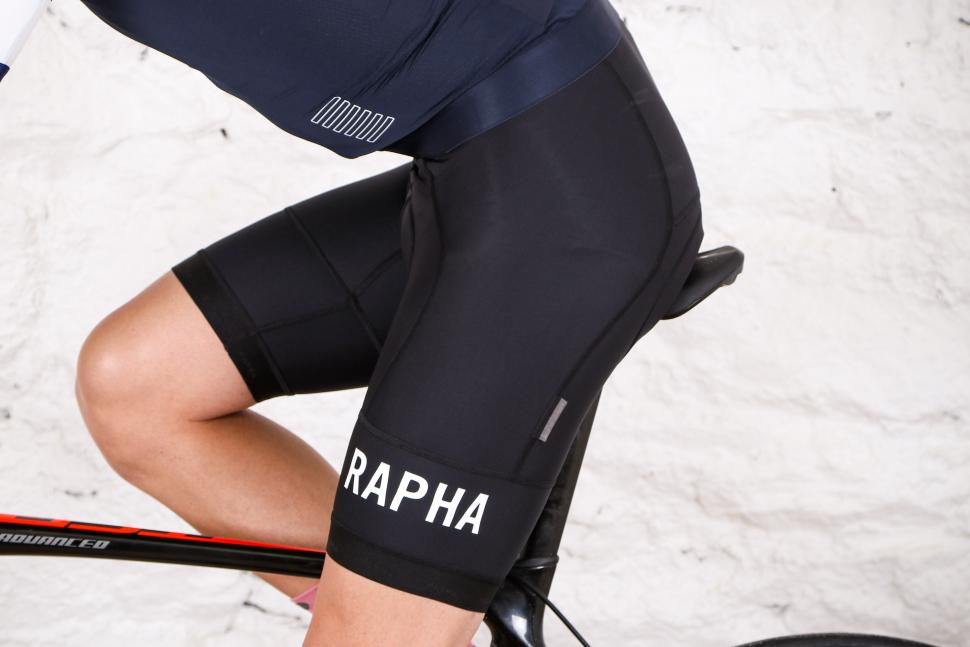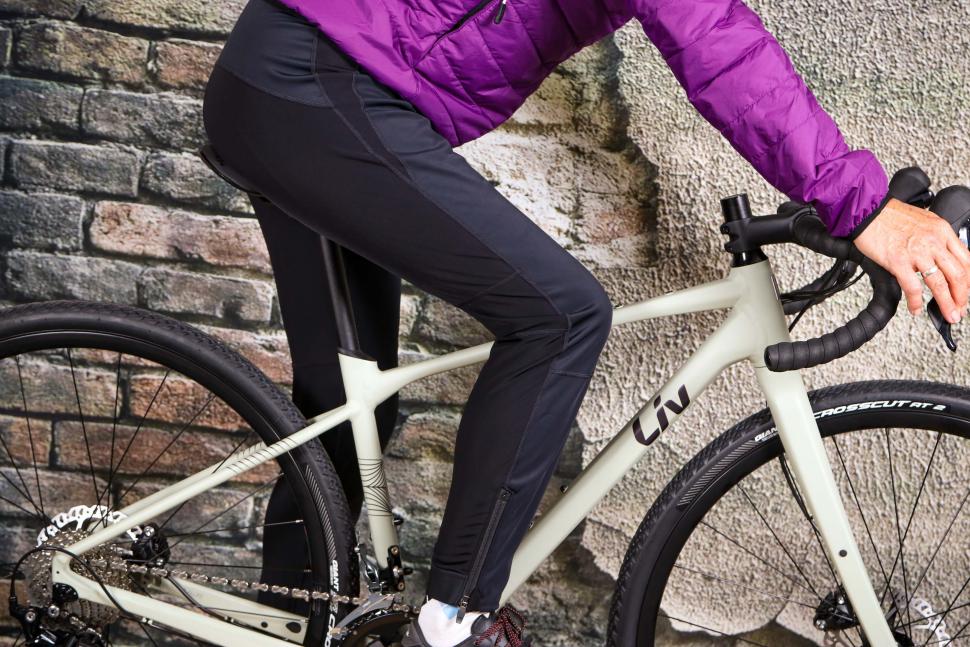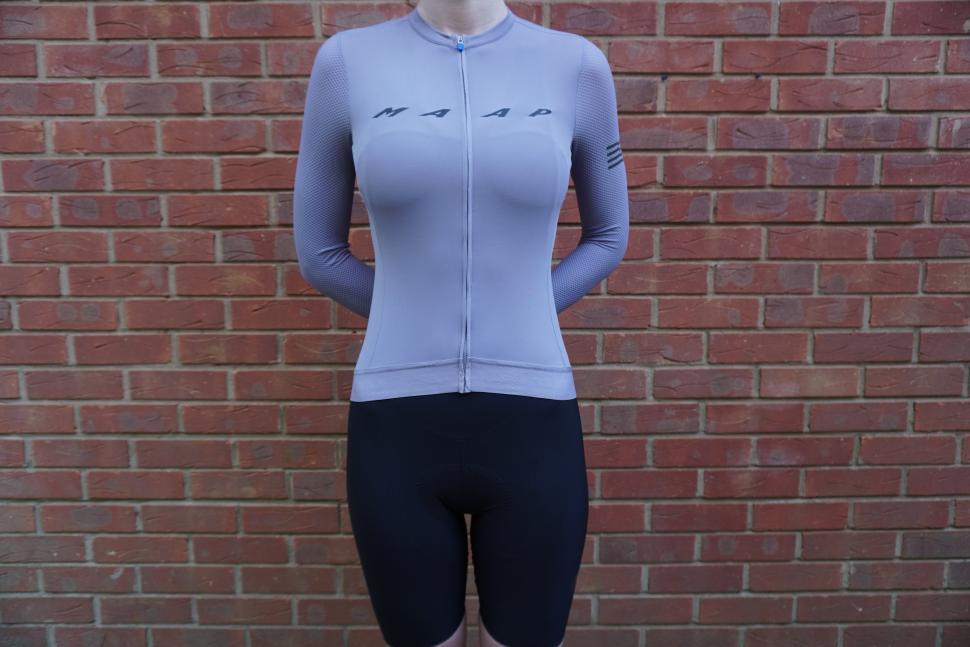- News
- Reviews
- Bikes
- Accessories
- Accessories - misc
- Computer mounts
- Bags
- Bar ends
- Bike bags & cases
- Bottle cages
- Bottles
- Cameras
- Car racks
- Child seats
- Computers
- Glasses
- GPS units
- Helmets
- Lights - front
- Lights - rear
- Lights - sets
- Locks
- Mirrors
- Mudguards
- Racks
- Pumps & CO2 inflators
- Puncture kits
- Reflectives
- Smart watches
- Stands and racks
- Trailers
- Clothing
- Components
- Bar tape & grips
- Bottom brackets
- Brake & gear cables
- Brake & STI levers
- Brake pads & spares
- Brakes
- Cassettes & freewheels
- Chains
- Chainsets & chainrings
- Derailleurs - front
- Derailleurs - rear
- Forks
- Gear levers & shifters
- Groupsets
- Handlebars & extensions
- Headsets
- Hubs
- Inner tubes
- Pedals
- Quick releases & skewers
- Saddles
- Seatposts
- Stems
- Wheels
- Tyres
- Health, fitness and nutrition
- Tools and workshop
- Miscellaneous
- Cross country mountain bikes
- Tubeless valves
- Buyers Guides
- Features
- Forum
- Recommends
- Podcast
BUYER'S GUIDE
 Cycling clothing guide July 2021
Cycling clothing guide July 2021What to wear for cycling — how to choose the best cycle clothing
New cyclists often wonder what's the best clothing for riding a bike? The answer is simple – it depends what type of cycling you're doing, it might be the clothes you're wearing now or it might be something more technical. In this guide to cycle clothing we will help you decide on the best outfit for your ride.
Because cycling encompasses everything from nipping to the shops to riding Land’s End to John O’Groats and from riding to work to racing the Tour de France there's a huge range of specialist cycling clothing.
First off, something you won’t read often in the specialist bike media. You can ride a bike without any special cycling clothing at all. None. Not a stitch. Yes, it’s true: you can ride a bike without Lycra shorts, special shoes, tight-fitting jerseys or even gloves with holes in the back. (In fact the World Naked Bike Rides held in various cities show you can ride without clothes at all, but you’ll get a bit chilly if you try that every day in the UK.)
If you’re not a hurry, or your journey is relatively short, you really don’t need special cycling clothing. In places like the Netherlands, Copenhagen or Cambridge, the vast majority of people riding bikes are doing so in their regular clothes. Don't want to get sweaty? Slow down. Don't want to get wet? Ride a bike with mudguards, wear your regular waterproof jacket or even use an umbrella!
So why do cyclists bother with all that Lycra and Gore-Tex?
In a word: comfort.
Your regular street clothes are fine when you’re not going far or fast and the weather’s good, but for longer rides or when the weather turns nasty, you’ll be a lot more comfortable in cycling clothing.
That doesn’t mean you have to look like Bradley Wiggins winning the Tour de France, though. Lycra’s great for going fast, but you can get very comfortable cycling gear that doesn’t have that super-tight thing happening.
Why is cycling clothing better?
Fit. Cycling gear is cut to fit properly when you’re leaning forward over the handlebars. That means shirts and jackets have a longer back to keep your lower back covered, and legwear has a higher waist at the back too. To stop your wrists being exposed, sleeves are a bit longer on long-sleeved shirts and jackets, and legwear is shaped with a bends at the waist and in the knee so doesn’t impede pedalling.
Movement. Cycling gear moves with you as you ride. That’s especially important for legwear, because your legs are the part of you that moves most. That’s the reason why cycling shorts are made from Lycra fabric, because it has enough built-in stretch that it doesn’t bunch up and chafe. Similarly, cycling tights
Sweat-handling. Ride up a steep hill in a cotton t-shirt under a waterproof jacket and you quickly discover why cycling clothing isn’t made from cotton. You sweat, the sweat soaks the shirt and you get wet, and then cold. Cycling gear is made from fabrics through which water can move away from your skin and evaporate, a phenomenon usually referred to as ‘wicking’ by analogy with the way wax moves up a candle wick.
Outer layers for wet weather also use fabrics designed to shift sweat. Such ‘breathable’ fabrics keep rain out, but allow water vapour — sweat — out. However, no breathable fabric is capable of transmitting the amount of sweat a cyclist produces when working hard, so cycling waterproofs also have vents to let out warm, moist air. These are positioned so that they don’t let in water, in places such as the underarms or under flaps at the back.
Cycling gloves usually have a patch of towelling fabric on the back so you can wipe your face with them when it’s hot and sweaty, or your nose when it’s cold. It’s another small but often handy bit of body fluid management.
Padding. The padding in cycling shorts inspired Alexei Sayle’s alternative name for MAMILs like himself: PUFFINS, or Pathetic Unfit Fat F**kers In Nappies. But while it’s odd to have a lump of foam in your shorts, it’s there for a two very good reasons.
Providing an extra layer of shock absorption is the first reason. Modern shorts pads have at least one layer of foam inside them, often more or different thickness and density. The idea is to help reduce the road shock that gets through to your bum, working in tandem with the padding in your saddle.
Perhaps more importantly, the pad puts an even layer of soft fabric against your skin. (In case you didn’t know, you don’t wear underwear with cycling shorts.) That helps prevent chafing so long rides become possible without you walking like a cowboy afterwards.
The other area where padding is useful is your hands. Cycling gloves have a thin layer of padding sewn into the palm to deal with vibration from the handlebars. The palm is usually made from leather or a tough synthetic to protect your hands if you fall.
Efficiency. Proper cycling clothing can make you go faster by ensuring you don’t waste energy as you ride. The most important difference is that cycling clothing is more aerodynamic than regular gear, because it fits closely with no spare fabric flapping in the breeze.
It helps in other areas too. Cycling shoes have stiff soles, so your energy isn’t wasted flexing rubber over your pedals. That also makes for comfier feet because the pressure on the pedal is spread over your whole foot.
Types of cycling clothing
Shorts. The definitive item of specialist cycling gear, classic cycling shorts are made from stretchy Nylon/Lycra with a pad inside to cushion your bum, as discussed above. There are two variants, waist shorts and bib shorts. Waist shorts have an elastic waist band to hold them up, while bib shorts have built in braces.
Bib shorts are the more comfortable of the two options, though they do make loo visits less convenient, especially for women. The lack of a waistband is what makes the big difference.
However, Lycra shorts aren’t the only option. If you’d rather the world not be able to tell what religion you are, there are less close-fitting options, usually aimed at mountain bikers, touring cyclists or round-town riders. These shorts usually have a loose outer shell with a liner that’s basically a waist short that can be removed for cleaning. Australians call these ‘shy shorts’, which sums it up perfectly.
The best shy shorts are all-day comfortable and have the added advantage that you look more like a normal person at a cafe ride stop.
Shorts range from about £10 up to over £200. There’s no need to go mad. Decent shorts starts from around £25; spend a bit more if you’re planning very long rides.
Read more: Buyer's guide to cycling shorts
Read more: Best cheap cycling shorts
Jerseys. Usually shaped like a t-shirt but made from wicking synthetic materials or a blend incorporating Merino wool, a cycling jersey usually has a high neck to protect you from the sun, a zip at the front — the length varies — and pockets at the back to carry your stuff. The most common jerseys have short or long sleeves, though sleeveless jerseys are also available for very hot weather.
Jersey fabrics range from ultra-light breathable mesh, to thick windproof and water-resistant fabrics. There’s a grey area where thick, weatherproof jerseys merge into jackets while the lightest jerseys are little more than base layers with pockets.
For most of your riding you’ll want a medium-weight short-sleever. As with most clothing, it’s best to try before you buy. The fit of jerseys varies a lot, from very close shirts intended for racing to looser jerseys that even PUFFINS can get away with. Expect to spend from as little as £10.
Read more: Best cheap cycling jerseys
Gloves. Another item of cycling clothing that’s steeped in tradition. The classic ‘track mitt’ has a lightly padded leather palm, crocheted cotton back and a Velcro strip to hold it in place around your wrist. There are loads of alternatives, though, with gel padding in the palm, stretchy backs so there’s no need for a Velcro tab, towelling wipes on the thumb and lots of other features.
For winter you’ll want long-finger gloves and these are available with various amounts of insulation from ‘Ooh, it’s a tad nippy’ to ‘Arctic winter’.
Read more: Buyer's guide to winter gloves
Tights. When the temperature drops you’ll want to cover more of your body. Cycling tights extend the coverage to your ankles, and are usually made of a thicker material to keep you warm. Like shorts they’re available with and without bibs, and they’re also available with and without a pad. You wear unpadded tights over Lycra shorts so you can get more than one use from them in between washes.
Three-quarter leggings are halfway between sorts and tights. The legs extend to mid-calf, so they keep the chill off your knees. Most three-quarter leggings are made from fairly light Lycra so they can be used in warm weather too. Three-quarters are consistently popular with female cyclists.
Another legwear option is cycling trousers or jeans. These are usually made from fabric with a bit of stretch to make it easy to pedal in them, and have features like reflective patches inside the cuffs that are visible when you turn them up, a pocket for a small D-lock, buttons or pop studs to keep the cuffs out of your chain. They also have a bum designed for cycling, with seams placed away from the centre line to avoid saddle pressure.
As well as cycling companies like Rapha and Vulpine, clothing specialists including iconic jeans maker Levi’s have made cycling legwear. Even Marks and Spencer got in on the act for a while.
Read more: Buyer's guide to tights
Arm and leg warmers. When you want a bit more coverage at the beginning of the day, arm warmrs and leg warmers will fend off the chill but can be taken off and stuffed into a pocket when it warms up later.
Base layers. A base layer goes between your skin and your jersey where it does a surprising number of jobs for what’s basically a high-tech vest. For starters, it helps move sweat away from your skin to your jersey. A very light base layer can therefore help keep you more comfortable even in hot weather.
When the temperature drops, a thicker base layer keeps you warm. Undershirts made from Merino wool are popular when it’s cold. Some base layers have a layer of windproof fabric built in, which can be a massive boon when it’s very cold.
Base layers have another less obvious use. If you crash, a base layer lets your jersey slide around rather than dragging your skin with it. It’s not much, but you can’t exactly wear body armour or motorcycle leathers on a bike, so any protection against the consequences of a crash is worth having.
Read more: Buyer's guide to base layers
Jackets. As mentioned above, waterproof or heavier outer layers start where jerseys leave off. There are three main tyres: ‘thermal’ jackets that provide insulation; fully waterproof ‘hardshells’ and ‘softshells’ that are both insulating and highly water-resistant.
Thermal jackets are intended for cold, dry conditions: think a clear day after snow in the Alps, not December rain in Surrey. Hardshells are your classic cycling waterproofs, often made from breathable fabrics so you don’t get too sweaty inside. Softshells cross the streams and provide both warmth and protection from the rain. They originally became popular with mountain bikers, but have crossed over to the road as softer, more flexible softshell fabrics have replaced the rather stiff originals.
You can also get jackets that fit well on the bike, but are styled more like a classic blazer or other standard jacket.
Read more: Buyer's guide to cycling jackets
Gilet. A gilet or vest is a sleeveless outer layer that keeps the wind off your torso. Gilets are great with a long-sleeved jersey in spring and autumn. They can be made from breathable waterproof fabrics, softshells of just relatively basic waterproof nylon with mesh backs to stop you from getting sweaty.
Socks. Socks for cycling are made from thin, sweat-wicking fabrics, usually with a thicker layer on the sole for padding. In the winter many riders switch to Merino wool as it retains some insulating properties even when wet.
Red more: Buyer's guide to socks
Shoes. Stiff soles are the main feature of cycling shoes, usually with attachment points for cleats that clip into special pedals. They fit snugly, held in place with Velcro or ratchet straps or occasionally old-fashioned laces. Racing-style shoes have a cleat that stands proud of the sole and so are awkward to walk in. Shoes with recessed cleats, originally developed for mountain biking, are easier to walk in which makes them great for commuting, touring and more casual riding.
Read more: Buyer's guide to cycling shoes
About road.cc Buyer's Guides
The aim of road.cc buyer's guides is to give you the most, authoritative, objective and up-to-date buying advice. We continuously update and republish our guides, checking prices, availability and looking for the best deals.
Our guides include links to websites where you can buy the featured products. Like most sites we make a small amount of money if you buy something after clicking on one of those links. We want you to be happy with what you buy, so we only include a product if we think it's one of the best of its kind.
As far as possible that means recommending equipment that we have actually reviewed, but we also include products that are popular, highly-regarded benchmarks in their categories.
Here's some more information on how road.cc makes money.
You can also find further guides on our sister sites off.road.cc and ebiketips.
road.cc buyer's guides are maintained by the road.cc tech team. Email us with comments, corrections or queries.
John has been writing about bikes and cycling for over 30 years since discovering that people were mug enough to pay him for it rather than expecting him to do an honest day's work.
He was heavily involved in the mountain bike boom of the late 1980s as a racer, team manager and race promoter, and that led to writing for Mountain Biking UK magazine shortly after its inception. He got the gig by phoning up the editor and telling him the magazine was rubbish and he could do better. Rather than telling him to get lost, MBUK editor Tym Manley called John’s bluff and the rest is history.
Since then he has worked on MTB Pro magazine and was editor of Maximum Mountain Bike and Australian Mountain Bike magazines, before switching to the web in 2000 to work for CyclingNews.com. Along with road.cc founder Tony Farrelly, John was on the launch team for BikeRadar.com and subsequently became editor in chief of Future Publishing’s group of cycling magazines and websites, including Cycling Plus, MBUK, What Mountain Bike and Procycling.
John has also written for Cyclist magazine, edited the BikeMagic website and was founding editor of TotalWomensCycling.com before handing over to someone far more representative of the site's main audience.
He joined road.cc in 2013. He lives in Cambridge where the lack of hills is more than made up for by the headwinds.
Latest Comments
- chrisonabike 18 min 57 sec ago
Well if we're going that far back what I'm now wondering is what Caecilius called his? (Pretty sure he was doing alright - wasn't he a banker? He...
- froze 21 min 23 sec ago
6 years is not near enough, this was not an accident, it was a total and complete disregard for the safety of others, she should have gotten at...
- Sriracha 46 min 22 sec ago
The guy should be sacked for stupidity and incompetence in his job. A politician slagging off his constituents on the record is like doing a Gerald...
- stonojnr 1 hour 37 min ago
the Sheringham "mountain", a new speed bump in a car has put motorists in a spin, apparently....
- Rendel Harris 2 hours 17 min ago
A set of pedals can come in proper handy too sometimes.
- NoOneSpecial 2 hours 44 min ago
Memory lane!...
- Capt Sisko 3 hours 18 min ago
"There is also to be a new weekly cycling show. 'The Ultimate Cycling Show' will be hosted by Orla Chennaoui and Adam Blythe and launches for 15...
- wtjs 6 hours 14 min ago
Mercedes A-Class WU66 LLJ below went without MOT for 8 1/2 months from 19.10.23 to 2.7.24. I just happen to be doing some following up and evidence...
- HarrogateSpa 7 hours 13 min ago
I think you've got your Yateses mixed up.
















Add new comment
11 comments
"If you’d rather the world not be able to tell what religion you are, there are less close-fitting options,..."
Made me laugh!
Really? It made me wonder how the fit of my bibshorts would inform anyone of my devout atheism.
To be fair, atheism is pretty much the opposite of a religion. (It's an ideology).
I wear lycra because I'm a raving pervert. Doesn't everyone else?
Currently doing most of my riding in mountain bike baggies on flat pedals. The key has been switching to a hammock saddle (Brooks in my case) - and the big benefit is less time spent getting ready for a ride.
I did try riding in "normal" shorts but found I really needed the technical panelling of a good set of baggies to pedal without hems and seams causing irritation. Fortunately those darkside types have plenty of shorts that will do double duty as "normal" outwear, and the same applies for flat-pedal compatible shoes, so I can now be out on the bike in a couple of minutes of thinking "Let's go for a ride". Really quite liberating. Just wish that winter flat pedal shoes were available - Five Ten sort of do one but its not a patch on a Lake or Northwave or Shimano cleated winter boot.
A few years ago when working in a factory (remember when we had those in the UK?) I had some nice gortex lined safety boots. In summer I'd leave them at work and commute in cycle shoes but in winter they were great for keeping my feet warm and dry on the bike. They had a steel midsole so were quite stiff and I always meant to try modifying them to fit cleats (after they were replaced at work) but never got round to it. Waterproof hiking boots can be had quite cheaply at Decathlon and may be worth a try?
I have just found a pair of 5 10 Freerider EPSs, the winter version, water resistant upper and an insulated toe.
I have the water resistant version, which work and stop me getting a bootie full , though disapointingly no tongue "gusset" so water can get in, but far better than their standard jobs.
I reckoned it might be a cold year.
My toes do get cold.
I also picked up POCs enduro long fingered gloves, thick mesh backed, meant for the cold summer mornings or warm autumn/spring afternoons. Didn't notice when buying, but no terry on the thumb, no nose wiping at the moment, of course, but nice to be able to wipe the forehead when the helmet comes off.
I tried the 5 10s - unfortunately too narrow for my hobbit feet and resulting in numb toes (nerve numbness) and poor circulation and therefore cold feet. A shame as I had great hopes for them. Currently rocking a mid-ankle autumn boot and Sealskinz - the search goes on.
For cold winter riding on flat pedals, would the Fizik Artica X5 be a good option? They are toasty warm and stiff-soled. I use them with 2-bolt SPD cleats, but if you omit that bit, the rubber-cleated sole looks more like a hiking boot, which ought to work OK with flat pedals...
Might be an option, thanks,
However, what I've found is that flats with pins work best with rubber designed for pins rather than for walking - the super-tacky stuff that Michelin/Shimano and Five Ten use. I rode on flats in my old Shimano MO88s with an SPD cover for a while (piece of rubber that fills the SPD channel and replaces the cleats) and the pins cut up the sole badly and there was noticeably less grip. Flat pinned pedals really need completely flat soles it seems.
One thing I have learned: Riding fixed in loose underwear is to be avoided especially on downhill sections.